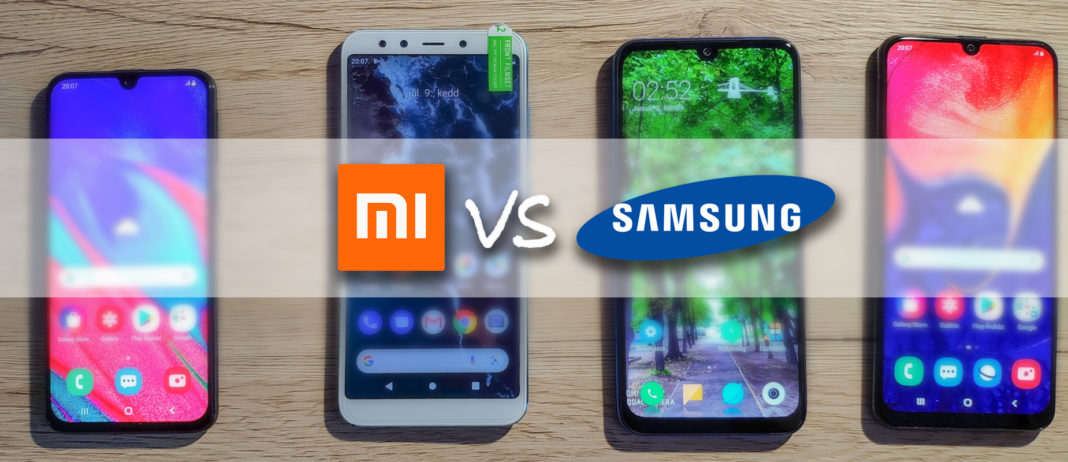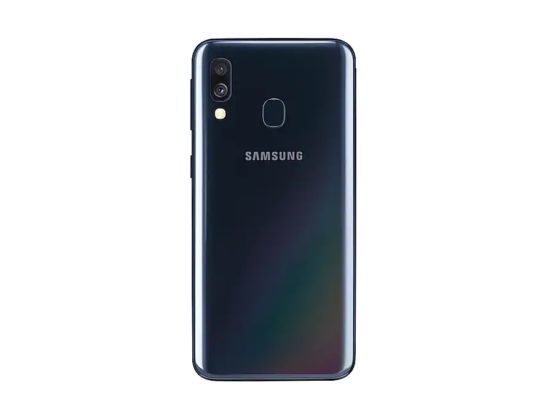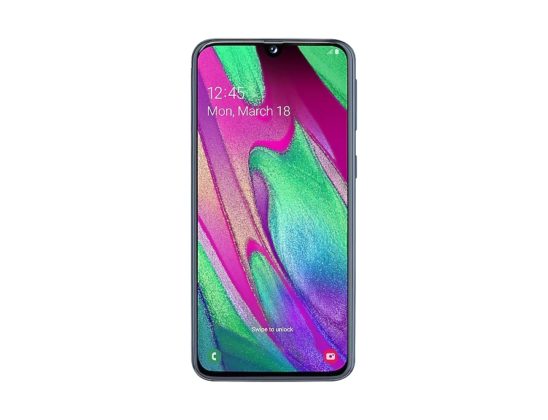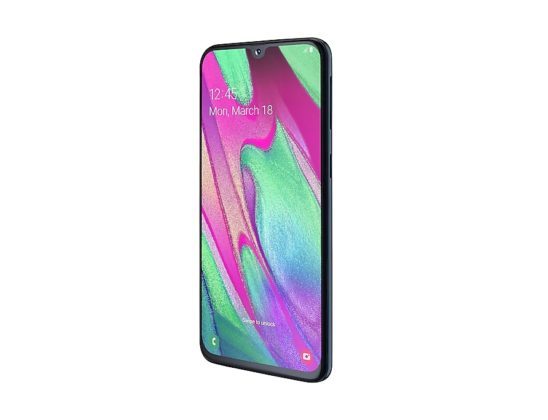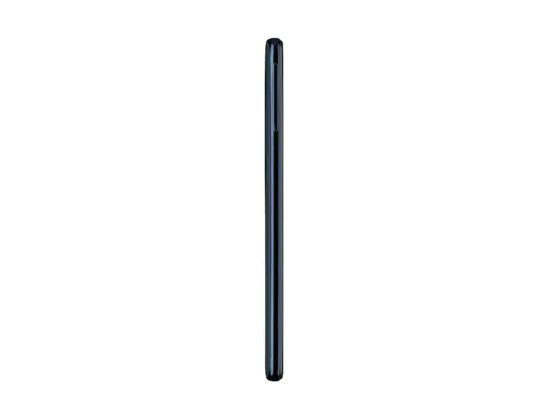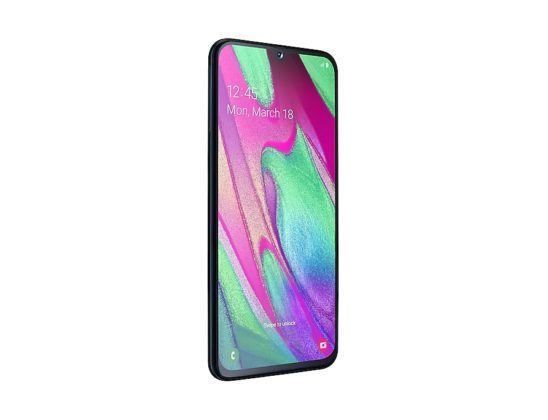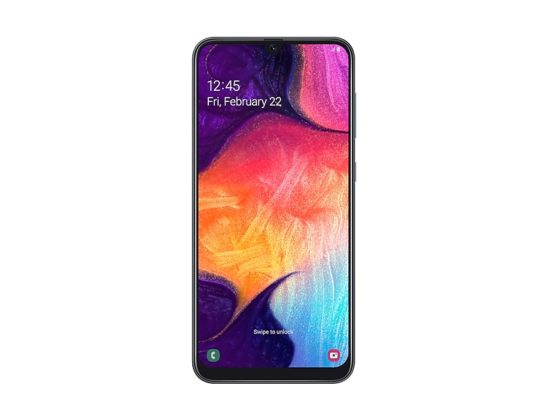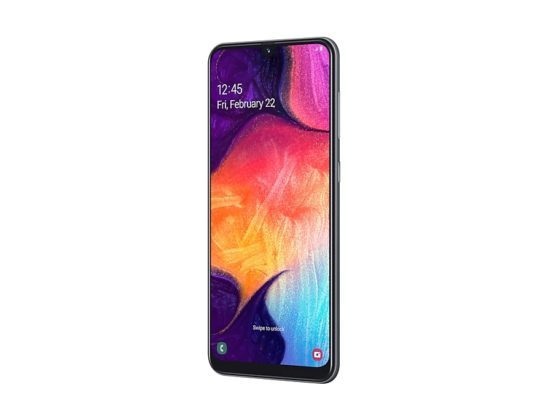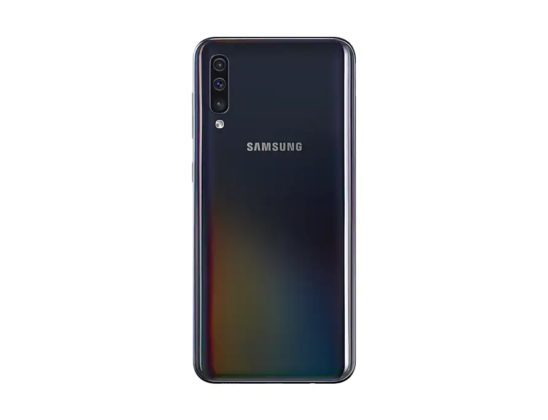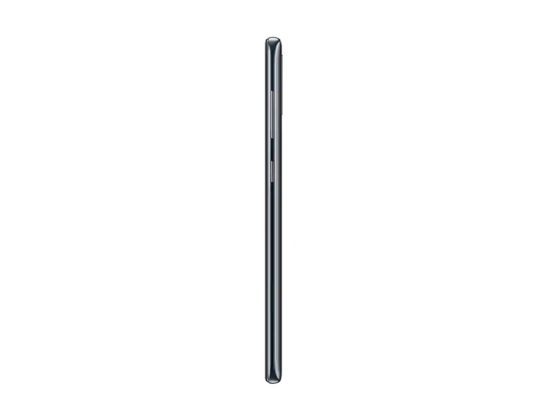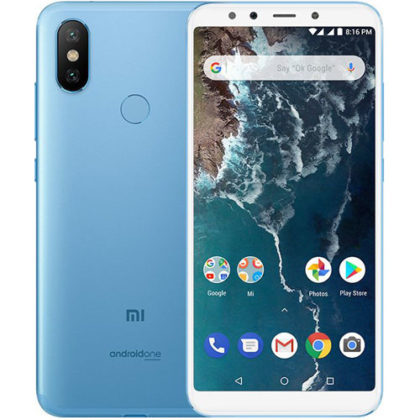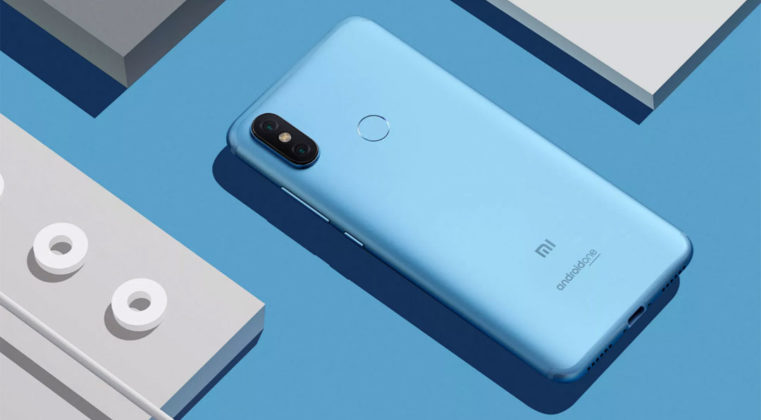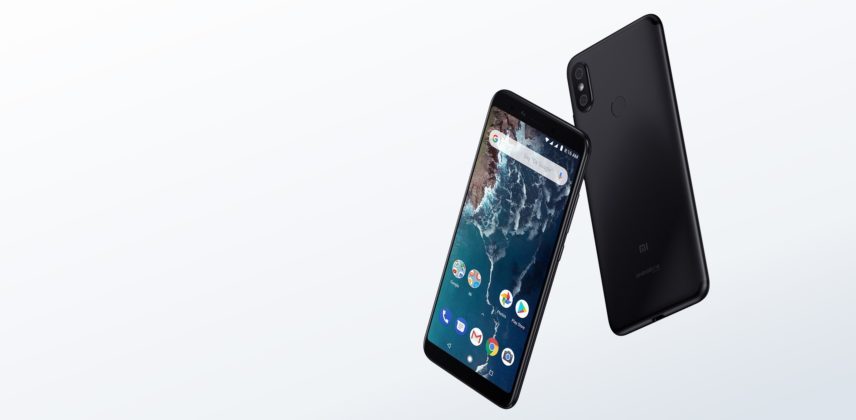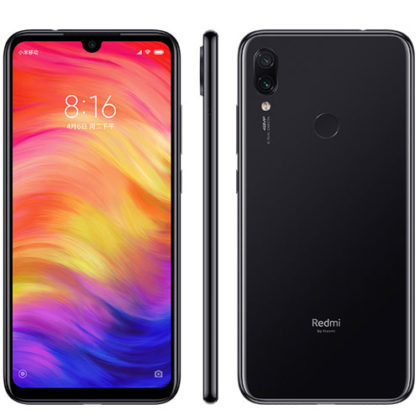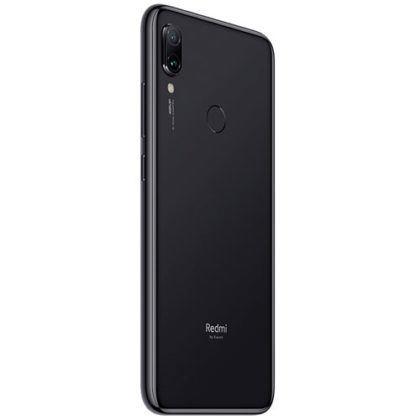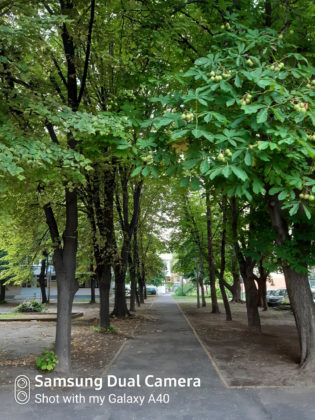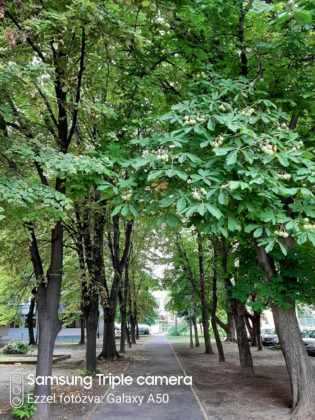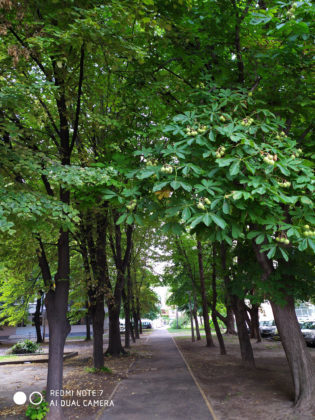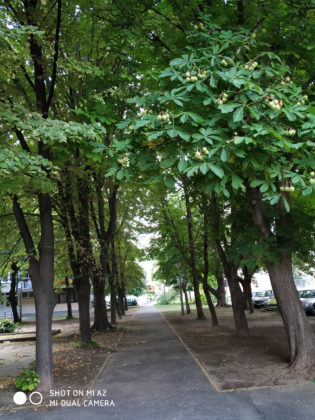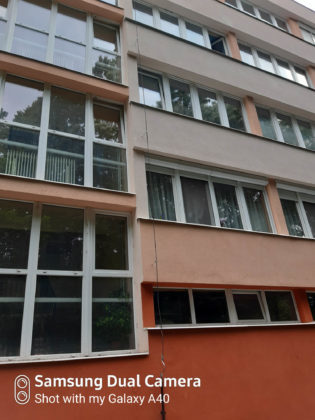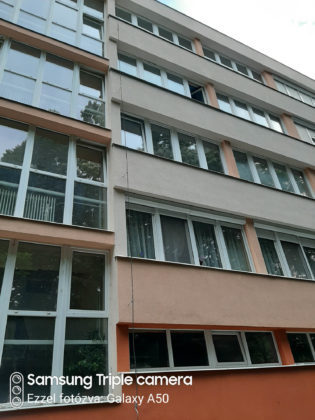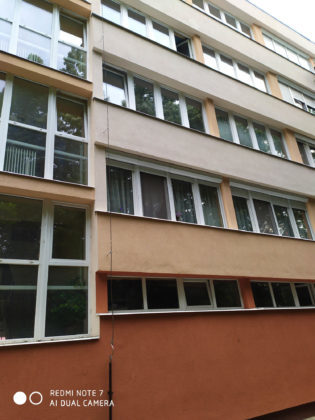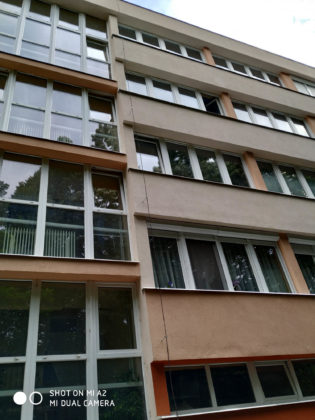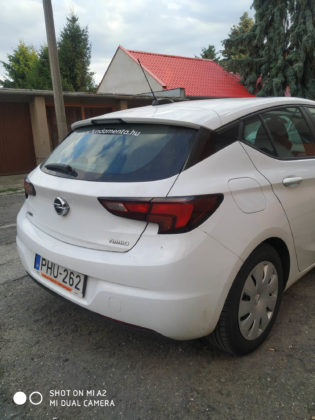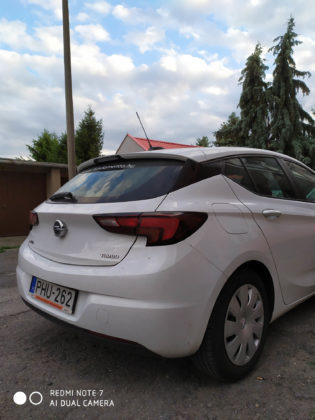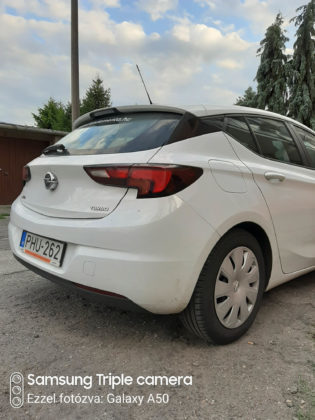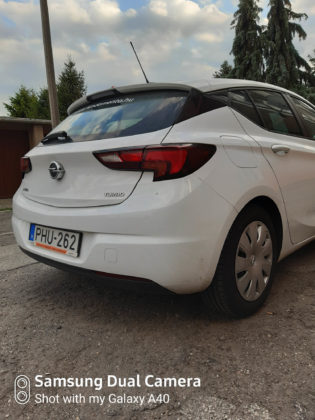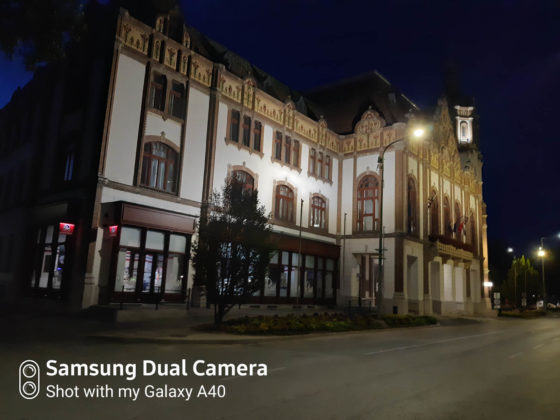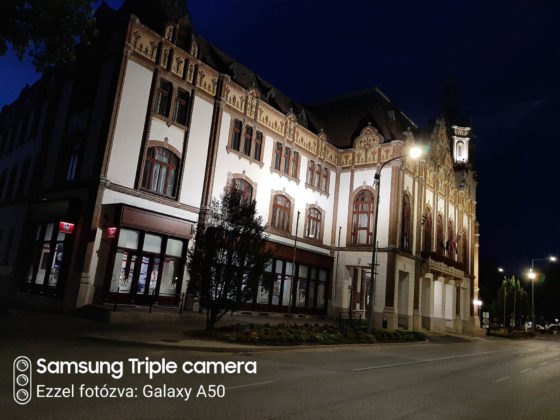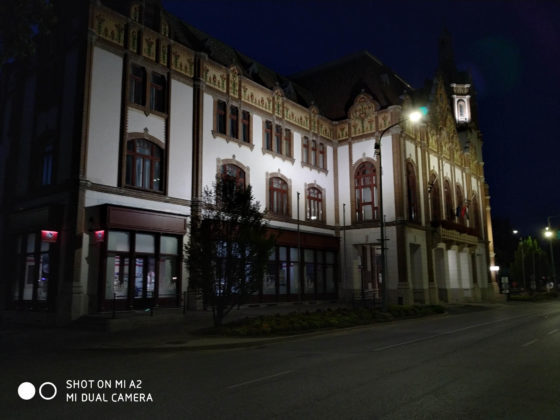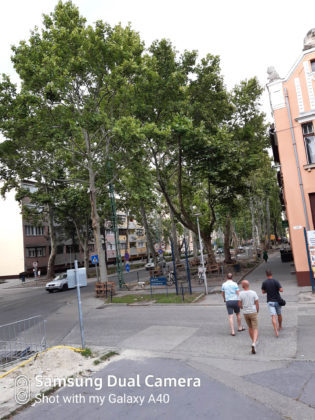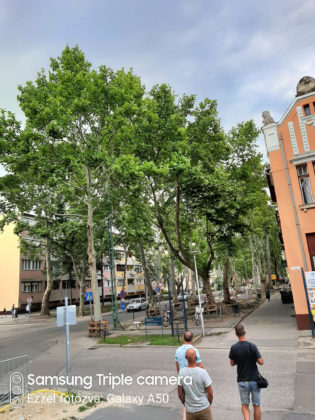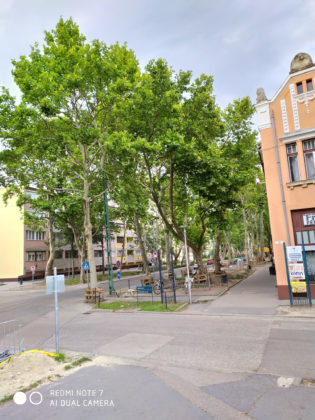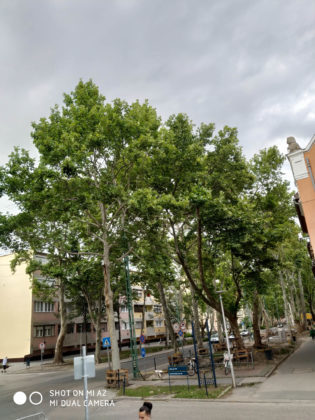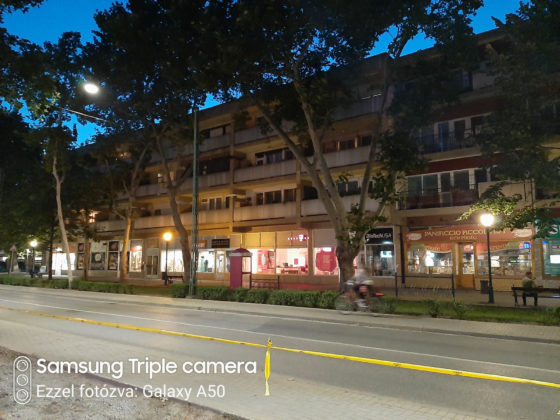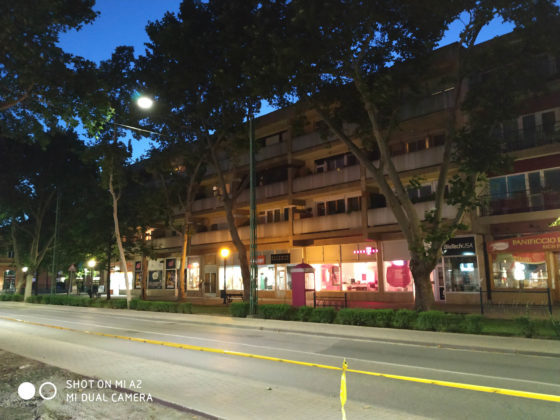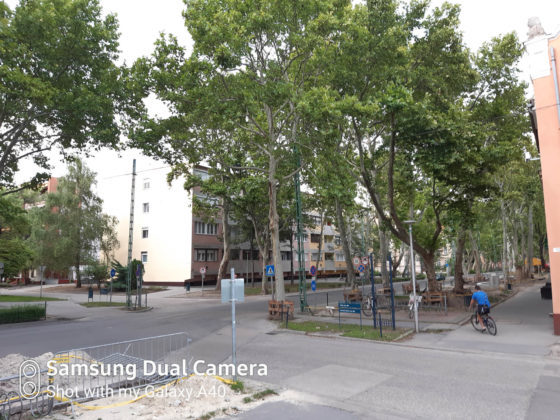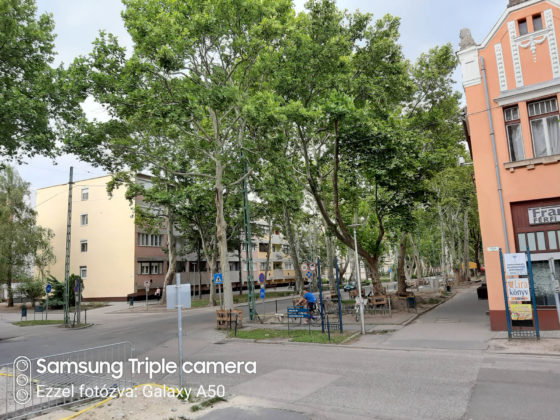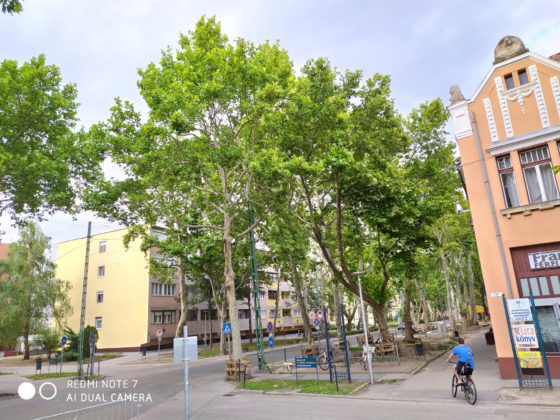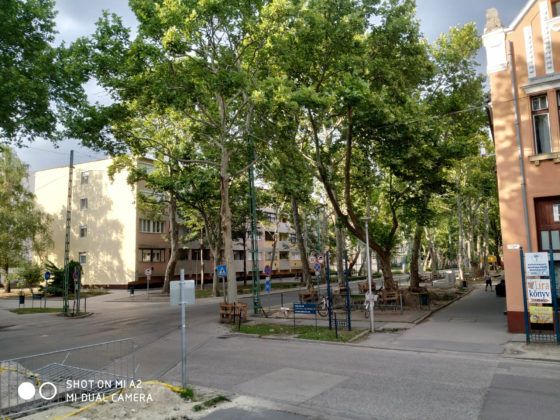This time, our editors have reviewed two Samsung models from this year and compared them with Xiaomi's mid-range models. Specifically, we look at what the Samsung Galaxy A40 / A50 pair can do compared to the Redmi Note 7, and Mi A2 models, in a strictly subjective way.
A few months ago, we had the opportunity to have a Redmi Note 7, Mi 8 Lite, Huawei P smart 2019 comparisonwhich showed that, although the competition is tighter than it was a few years ago, Xiaomi can still offer an excellent alternative for those switching brands or just starting out with a new smartphone.
This time, we have a new editor, and you can read and watch her writing and video presentation below.
If you want to see the video and photos instead of the dry data, scroll down.
Samsung Galaxy A40
Photos: samsung.com
The Galaxy A40 exactly 144.4 x 69.2 x 7.9 millimetres and 140 grams. The "Glasstic" which is covered in a glass effect plastic. It reminds me a bit of acrylic glass, it probably is, it just sounds less good from a marketing point of view. But the grip of the device is very comfortable, with a slim design.
The display is almost 6", but thanks to the cut-down bezels, you still get a handy size. This is slightly spoiled by the 19.5:9 aspect ratio panel's sensor cut, but there's a decent speakerphone. The notch housing the 25-megapixel selfie camera can of course be hidden, in which case you get a classic top bezel that could have accommodated the sensor and even the light and proximity sensor.
The FHD+ (1080 x 2340 pixels) Super AMOLED panel takes up almost the entire front of the phone. Viewing angles are flawless, brightness is outstanding, contrast is endless, and we decide the saturation, colour temperature and size of the content displayed. But there's no AOD or notification LED.
On the back, a Samsung inscription and a dual camera system (16 MP + 5 MP wide-angle sensor) are shared with an LED flash.
At the heart of the phone is Samsung's mid-range 14 nanometre chipset unveiled earlier this year. The Exynos 7904 eight-core core is made up of a dual-core Cortex-A73 block running at up to 1.8 GHz and a six-core, energy-efficient Cortex-A53 block running at up to 1.6 GHz, coupled with 4 GB of memory and 64 GB of expandable internal storage. Graphics are handled by a dual-core Mali G71, basically correct, but you'll feel the limitations.
Images are captured by a 16-megapixel sensor with f/1.7 aperture, PD autofocus and single-tone LED flash at normal viewing angle, while the secondary unit captures wide-angle shots at 5-megapixel resolution with f/2.2 aperture and fixed focus. The front unit is 25 megapixels, also with fixed focus.
The quality of normal-angle shots is not bad at all, although contrast and saturation are generally quite strong, even if you don't use the image optimisation option. In the evening, the software overcompensates with image noise that is harshly and visibly removed.
Video can be played at up to 1080p 30 fps. The chipset supports 4K 30 fps quality, but this is not an option here and you can't switch between viewing angles while recording.
Charging is handled by a USB-C port, and there's also a 3.5 mm jack.
The Galaxy A40 a likeable device with a compact size, a fair Super AMOLED display and hardware for everyday tasks.
Positives microSD with two SIM cards, NFC, 15-watt fast charging, jack connector.
As a drawback there is no notification LED, but not even AOD. The Galaxy A40 costs 85-90 thousand forints from official sources, regardless of the card.
Samsung Galaxy A50
Photos: samsung.com
The Galaxy A50 is almost a millimetre the size of the Redmi Note 7, which means it's not small. Both devices have nearly the same display (6.4 vs 6.3), but the bezels are slightly thinner in the A50 (especially at the bottom).
The display resolution is 1080 x 2340 pixels and the technology is Super AMOLED, with excellent brightness, calibration, contrast and viewing angles. There is a fingerprint scanner behind the display, which is a hi-tech solution. There's also AOD here, so the display is always visible, which is fortunately not omitted from the A50, if it was left out of the A40.
The shape itself is pretty much Samsung, with a teardrop-shaped notch at the top, with a front-facing camera of 25 megapixels. No notification LED here either.
The back is the glasstic mentioned on the A40, but there is no wireless charging, but there are three rear cameras placed lengthwise.
The heart of the phone is noticeably stronger than the A40. The Exynos 9610 system chip is 10nm wide and is quite frugal, but the eight-core solution (four Cortex-A73 cores clocked at 2.3GHz, the other four Cortex-A53 and scaled to 1.7GHz) is backed by a Mali G72 MP3, which guarantees plenty of fair system performance. This is coupled with at least 4 GB of RAM and 128 GB of internal storage.
Even though you have three cameras, you only get two angles of view (normal and wide), the third sensor is just a depth sensor that helps a little with portrait photography.
The main camera is 25 megapixels, with an aperture of F/1.7 and a 26 mm viewing angle. PDAF is the focus mode, scene optimisation is available, and in professional mode exposure, white balance and ISO are adjustable. HDR is automatically enabled. It's easy to switch to the other camera, which offers a 13mm angle of view and 8 megapixel resolution with an aperture of F/2.2, but you can tell that it's not going to be the better camera in terms of image quality, and it's not really worth experimenting with at night, for example.
We can be satisfied with the standard camera. The phone's display also shows that contrast, dynamics and saturation are fine. The focus is fast and accurate when taking photos, but it's unsteady at times when shooting video.
From a video perspective, the A50 doesn't offer much. There's no optical stabilisation behind any of the sensors, it lacks the ability to record in 4K resolution, but there is slowdown, which is 120 fps.
Behind the back, a sizable 4000 mAh battery provides roughly two days of power. Wireless charging is lacking, with a 15W fast charging option from the wall adapter, which is useful even if the A50 is otherwise really good for everyday use.
According to A50-was pretty well hit by Samsung, better than the A40, although that wasn't a bad product either. It's slightly more expensive, but it has so much more: AOD, an in-display fingerprint scanner, a 4000 mAh battery, better cameras and faster hardware. The official price of 125,000 HUF doesn't seem - perhaps - a huge exaggeration. On the independent market, it has a formidable rival, the also fresh Xiaomi Mi9 SE, which can stay within the 100 grand dream limit with very similar parameters.
Xiaomi Mi A2
Photos: mi.com
The Mi A2 has a clean, simple, modern look, and compared to the Mi A1, when you look at the two phones side by side, you'll notice how much brighter the colours and better viewing angles are.
It measures 158.7 x 75.4 x 7.3 millimetres and weighs 166 grams, which means it's mainly a height increase compared to the Mi A1, but there's no marked difference, it was a sizeable phablet, this is one too.
On the front, we see a 6-inch, 18:9 Full HD (1080 x 2160 pixels) IPS display with 403 ppi pixel density, vibrant colours, excellent line sharpness, great viewing angles and, importantly for many, no notch. Not left out thanks to the white notification LED.
The plastic antenna outlets are almost invisible on the aluminium back, and the Mi logo and Android One lettering are barely visible. Although the camera is a spectacular part of the back, at least a double LED flash has been included in this model.
The Qualcomm Snapdragon 660 is one of the best chipsets Xiaomi could use in this price range, as it is both frugal with its 14 nanometre chip width and - and this is the real virtue of replacing the Snapdragon 625 - powerful enough. Alongside the 8-core Kryo 260 processor, we get Adreno 512 graphics, Hexagon 680 DSP and at least 4 GB of LPDDR4X RAM. There's a 4/64 GB version, but there's also a 6/128 GB top-end model.
On the back, a 20 megapixel (IMX376) and a 12 megapixel (IMX486) Sony sensor pair work together with the same angle of view, but as the former has a larger 2 micron sensor pixel, the higher resolution sensor behind the equally f/1.75 lenses is responsible for the lower light images.
You can adjust whether you want to see the front-facing camera image mirrored, whether you want a shutter sound, whether you need guide lines or whether you want time and location stamps, and in manual mode you can adjust white balance, focus, shutter speed and sensitivity, or switch between rear lenses.
Daytime image quality is basically good, with correct dynamic range and detail. There are anomalies when focusing close up, but it's still perfectly usable. The focusing speeds of the cameras are roughly the same, and while the system does have problems with close subjects, it doesn't take long to focus at night for distant subjects.
In terms of video, there's nothing to complain about, 4K is very commendable in this segment even at 30 fps, and in Full HD you can even reach 60 fps. Electronic image stabilisation can be set and manual touch focus is also possible during video shooting, which is necessary otherwise you'll encounter unwarranted refocusing.
The battery has a capacity of 3000 mAh and finally has official support for Qualcomm QuickCharge 3.0 (4.0 for the Indian version), with the factory 5V/2A charger it took about 2 hours to fully charge, reaching 35% in half an hour. A three-day battery life is not to be expected, but you can get through a day without charging even with the heaviest usage, and two full days is not unrealistic if you're a light user.
With a domestic price of around 65-75 000 forints for the Mi A2, Xiaomi has once again put a very good offer on the table, for this money users get a great looking phone with a beautiful display, correct hardware, up-to-date and lightning fast system, and frequent updates.
Redmi Note 7
Photos: mi.com
The Redmi Note 7-It's covered on both sides with glass (Gorilla Glass 5), which makes it slightly heavier than the Redmi 7, at 159.2 x 75.21 x 8.1 millimetres and 186 grams. The grip of the device is also slightly sturdier and heavier, but the basic ergonomics have not changed. It's still big, but manageable.
The display has a teardrop-shaped sensor island with a 13-megapixel camera above it with a speakerphone, and also on the cavity is the light and proximity sensor.
The 6.3-inch, 18.5:9 panel has an FHD+ resolution, which means 409 pixels per inch and a total of 1080 x 2340. The display quality is good, with vivid colours, contrast is of the high contrast variety and maximum brightness is sufficient. And thankfully there's notification LED too.
The back is glass, which looks very good with the colour-transparent design. The fingerprint scanner, which works excellently and is right at hand, is in the usual place, and the dual camera system, consisting of a 48-megapixel main camera and a 5-megapixel auxiliary sensor, stands out in the left corner. Below the single, single-tone LED flash is a 48MP AI Dual Camera, with branding in the lower third: Redmi by Xiaomi.
The 14-nanometer Snapdragon 660 set consists of a power-centric stack of four 2.2 GHz Kryo 260 Gold cores and a power-efficient unit also containing four Kryo 260 Silver cores at up to 1.8 GHz. The phone is also available in 3/32 GB and 4/128 GB variants, and graphics are managed by the Adreno 512 IPG with the outstanding efficiency of a chipset. With these features, operation is naturally error and disruption-free, stable and impeccably fast.
The camera module was supplied by Samsung of the Samsung ISOCELL Bright GM1 variety. It is a 48 megapixel quad bayer layout and f/1.8 aperture. The 1/2-inch sensor has a pixel size of 0.8µm, but images are basically taken at 12 megapixels unless you switch to 48 megapixels in Pro mode. But at lower resolutions you get sharper and less noisy images, plus AI scene detection and HDR are available. The second camera is a 5-megapixel depth-of-field sensor that helps with portraits. The selfie camera is 13 megapixels with a fixed focus and a bunch of software extras like AI, HDR and beautification features.
Imaging is very good in this category, but the movie recording capabilities lack 4K recording, even though the chipset would be fully capable. It works with alternative camera software, by the way, but officially only 1080p 30 or 60 fps quality can be recorded. (By the way, the device supports camera2 api, you can also create raw image files.)
The device supports Quick Charge 4.0 fast charging if you buy a suitable charging head. The factory adapter can only handle 5V/2A at 10 watts. Offline video can be played for about 11 hours on a single charge, and browsing for about 10 hours, so with average usage, two days of battery life is about right.
What can be pointed out as a shortcoming of the Redmi Note 7 is that there is no NFC, the maximum resolution of video recording is limited by software (which is very easy to get around) and only a 10-watt fast charger is included, even though it supports the 18-watt Quick Charge 4.0 standard.
But these are things that are not so relevant for a 65 thousand HUF device. A Redmi Note 7 with excellent hardware performance, great display, beautiful finish, fair multimedia capabilities, infra controller, Type-C and jack connectors, it really is the best choice in its price range.
Photography skills
You can see the images of each of the four devices with their own watermark, grouped through several photos. The sizes have been reduced to 3MP for ease of use.
You can clearly see from the pictures that overall the Samsung Galaxy A50 came out on top. However, the camera and the algorithm did not excel in all situations. HDR often produced images that were too fake, removing all the shadows from the image (this was also the case on the Redmi Note 7). Light metering and cold colours were worse than the A40 in several cases. The A40's dynamic range is small, and it also took weaker pictures than the Mi A2, making it the weakest of the four. The Redmi Note 7's white balance sometimes produced colours that were too purple, but apart from that, it's not a mid-range phone with a bad camera. (It's already proven itself against the Huawei P smart 2019.)
You can feel the age of the hardware in the Mi A2, the oldest of the four (one year old design), it certainly didn't perform well in the dark, but it can't match the Note 7 in the daylight. The two Samsung's watermarking is perfect for this purpose, but for family photos, turn it off. At this size, it's rather distracting, and in the case of the A40, it's not even justified for advertising purposes.
Xiaomi vs. Samsung Cue
The two Samsung's didn't do badly, with the A40 definitely scoring a red for compact size. AMOLED displays are not uncommon in this price range, and if they are available in-house, Samsung doesn't buy IPS panels unnecessarily. So far, this year's palette is very sympathetic, but the hardware clearly shows where Samsung has been forced to cut corners. The A50 is still a bit pricey at the current card-independent price, but this model will be purchased with a subscription by the majority of operators, so it can be taken on in monthly instalments.
Xiaomi took a leap forward in 2018 with the Mi A2, with both hardware and camera significantly better than the first-generation Mi A1. Today, especially with the arrival of the Mi A3, it's worth considering recommending. Although the Mi A3 is very divisive - many consider the drop in display resolution a downright sacrilege - it will undeniably be a success. Xiaomi has also been forced to draw the line somewhere to keep the pricing from going overboard. You can expect to see an unboxing of the Mi A3 at the end of July, and a test soon.
The Redmi Note 7 was clearly the best of the four. It's a decent device, although contrary to the advertising it's neither waterproof nor shockproof. The Gorilla Glass 5 coating doesn't perform as well as it does on paper or in the promotion, so use it with extra care in everyday life. For the price, it's clearly one of the best in the domestic range, and it's no coincidence that it beat both the Redmi Note 5 and Note 6 Pro in sales in Hungary in the first 2 months
Xiami also has something new in the entry-level category for the summer, with the arrival of the Redmi 7A a few weeks ago. Although it's physical size rivals the Mi 9 SE, the display is only 5.45″, making it the smallest display smartphone in this year's Xiaomi line-up. I'll be introducing you to this model soon.
Hello!

















